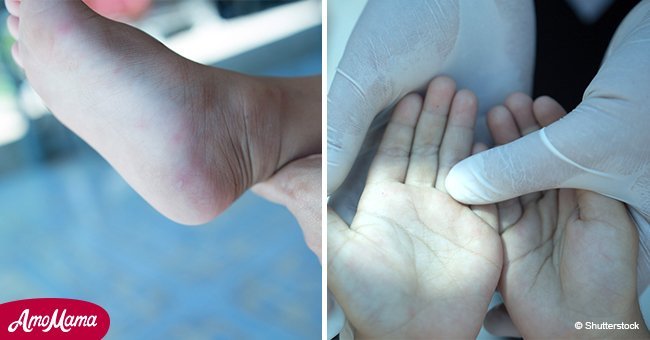
Public play-places can be hubs for bacteria and exposes your child to viruses
This mother was shocked when her baby contracted an awful disease, and wants to help others treat and prevent the same kind of infection.
Madelyn, a mother from the Philippines, had allowed her son Clark to play in a children's play area in a mall one day while shoppng. But while all seemed well, the next morning she found him in pain and covered in blisters.
As reported by Healthy Holistic Living, Clark had a high fever, and had red spots all over his hands and feet. A doctor instantly recognized it as hand foot and mouth disease.
As a result of Clark's infection, Madelyn took to Facebook to warn other mothers of the dangers of public play areas with strange children.
“This post is sending awareness to parents for them to prevent their children from being infected and to know what to do in case this illness emerges,” she wrote.
The disease is actually quite common among children, especially those who are younger than 5 years old. It is only mildly contagious, and spreads through contact with an infected person's saliva or other bodily fluids.
It is particularly common among the little ones, then, because of diaper changes, shared bathrooms, and the general stickiness of children who happily stick anything in their little mouths.
Normally it is a faily mild illness that doesn't pose much of a risk to children long-term, but can lead to complications such as dehydration.
The most common symptoms of the illness are: High fever, sore throat, red rash and painful blisters on the hands, foot, and mouth, fatigue, irritability among infants and toddlers, and loss of appetite.
Because hand foot and mouth disease is a virus, there is no medication that treats it, and it should go away on its own after a few days. But there are some things that can be done to ease the time.
1. Coconut water ice cubes
The sores of the disease can be prevalent inside the mouth, and this can make eating and drinking quite painful.
Freezing coconut water and allowing the child to eat these will help to soothe the pain, and the potassium and electrolytes will help to fight dehydration.
2. Bone broth
Children with hand foot and mouth disease need to be getting extra nutrition. Bone broth is full of collagen, giving the skin a great boost to help fight off the disease.
3. Tea tree oil
This oil consists of plenty of antiviral, antiseptic, antifungal, and antibacterial properties which will help to speed up the healing process, and prevent any further spreading. Add a few drops to normal hand soap will do the trick.
4. Coconut oil
This oil will help to soothe the skin from the blisters and rash that accompanies hand foot and mouth disease. The antimicrobial and antiviral compounds will both provide relief and prevent the spread of the disease.
5. Epsom salt baths
This is another way to provide some relief for the painful sores on the skin. It will also help to detoxify the body.
6. Salt water
When the child has eaten, they should gargle with salt water to get rid of any potential irritants. This will also help to balance the mouth's pH levels and boost the immune system.
There are also a number of ways in which hand foot and mouth disease can be prevented, as prevention is a much friendlier alternative to cure.
The best method also helps for preventing any number of other unpleasant ailments: washing hands. This should be common practice after using the toilet, changing a diaper, or before preparing food.
Areas of the house that are "high-traffic" should also be frequently cleaned, like toilet seats and kitchen counters.
Teach little ones not to stick their hands in their mouth. Everything around them has germs on it, and those germs are then transferred from little hands into their mouths.
When a child is sick, they should be kept isolated from others, including their siblings and other children at their school to prevent the disease from spreading to others.